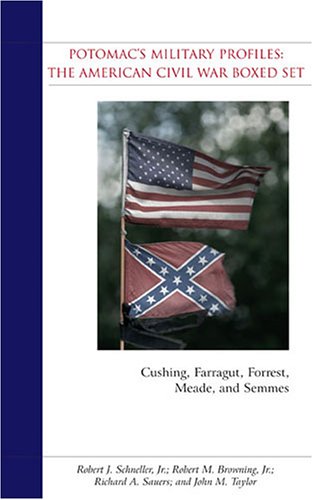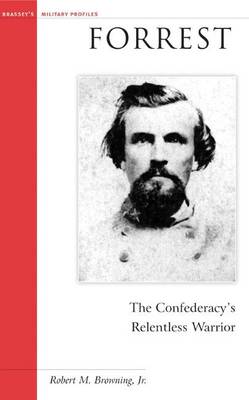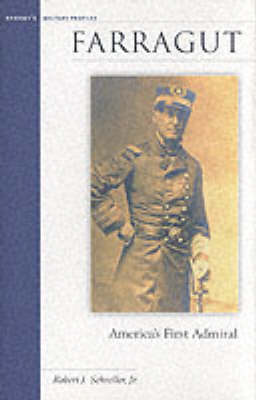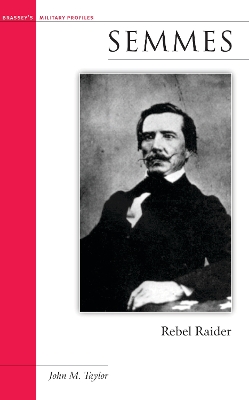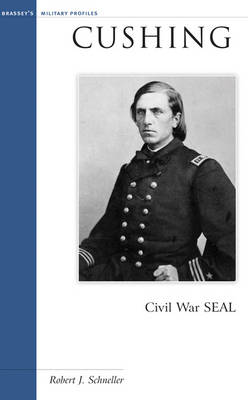Military Profiles
5 total works
The American Civil War Boxed Set
by Robert John Schneller, Robert M. Browning, Peter Sauers, and John M Taylor
Published 2 October 2006
Military Profiles are essential treatments of the lives of significant historical figures. Each book includes the details that one finds in a full-length biography and addresses a theme that explains which aspects of a subject's character, background, or behavior makes him or her worthy of our attention today. Now for the first time, you can get the profiles of five Civil War figures in one place with "Potomac's Military Profiles: The American Civil War Boxed Set", comprising Cushing, Farragut, Forrest, Meade, and Semmes.
In days of old a bard would have sung high ballads of the war hero, but here the task falls to the chief historian of the US Coast Guard. Browning presents a concise biography of the Confederate soldier who was both revered and loathed but is considered one of the greatest soldiers of the Civil War. Nathan Bedford Forrest (1821-77) was also adept i
A series of concise military biographies, each volume includes all of the important details and addresses a central organising theme to help the reader understand which aspects of a subject's character, background, or behaviour contributed to his or her success. These books will serve as a starting point for any novice reader who wishes to pursue a more sophisticated course of study of the subject. "Damn the torpedoes! Full speed ahead!" With those words, David Glasgow Farragut led a fleet of Union warships into Mobile Bay, where he achieved one of the most celebrated victories in American naval history. What separates the good officer from the great one, writes Robert J. Schneller Jr., is the courage to make difficult decisions in the heat of combat despite personal fear or the awful realization that some men will have to pay in blood. Farragut's personal attributes, such as his sharp intelligence and confidence, and his careful preparations, keen situational awareness, and courage to act boldly at decisive moments produced the Union's most important naval victories and resulted in his appointment as the U.S. Navy's first admiral.
These qualities also made Farragut the greatest naval officer, Union or Confederate, of the Civil War and, indeed, the most out-standing U.S. naval officer of the nineteenth century.
These qualities also made Farragut the greatest naval officer, Union or Confederate, of the Civil War and, indeed, the most out-standing U.S. naval officer of the nineteenth century.
One man—Capt. Raphael Semmes—dominates the history of Confederate naval operations in the American Civil War. Although the Confederates were hopelessly outnumbered at sea, Semmes roamed the oceans first in the CSS SUMTER and then the CSS ALABAMA, capturing nearly 100 Federal merchant ships and precipitating a flight from the American flag that decimated the Federal merchant marine. Revered in the South as a hero, the North reviled and feared the Yankee-hating Semmes as a pirate. Regardless of his reputation, his wartime exploits were remarkable.
Noted historian and biographer John M. Taylor illustrates how, under Semmes’s command, the ALABAMA became a household name in America and overseas and struck fear into the hearts of ships’crews and passengers alike. Incredibly, Semmes and the ALABAMA traveled 75,000 miles, and as far east as Singapore, without ever taking refuge in a Confederate port. In 1864, off the coast of Cherbourg, France, the Union’s USS KEARSAGE finally caught up with the Confederate raider and fought the last ever ship-to-ship gun duel between wooden warships.
Noted historian and biographer John M. Taylor illustrates how, under Semmes’s command, the ALABAMA became a household name in America and overseas and struck fear into the hearts of ships’crews and passengers alike. Incredibly, Semmes and the ALABAMA traveled 75,000 miles, and as far east as Singapore, without ever taking refuge in a Confederate port. In 1864, off the coast of Cherbourg, France, the Union’s USS KEARSAGE finally caught up with the Confederate raider and fought the last ever ship-to-ship gun duel between wooden warships.
Dismissed from the U.S. Naval Academy in early 1861, William Barker Cushing nonetheless emerged from the Civil War as one of the Navy's greatest heroes. Cushing transformed his reputation from a rabblerouser into a living legend, because he embodied the special qualities that the Navy demands of the men in whom it entrusts its most hazardous and secret tasks: a readiness to volunteer for dangerous assignments, an unflagging devotion to duty, and more than a fair share of good fortune. As Robert J. Schneller observes, "He was patriotic, aggressive, tough, and recklessly bold." Before embarking on his most daring mission-his celebrated destruction of the Confederate ironclad Albemarle-he bragged that he would "come out victorious or 'toes up.'" By the end of the war he had amassed four commendations from the Navy Department and the thanks of Congress and President Lincoln. "All this for a man," Schneller writes, "who was only twenty-two years old when Lee surrendered at Appomattox." Employing his customary readable and entertaining style, Schneller focuses on Cushing's naval career and those aspects of his personality that affected it.
